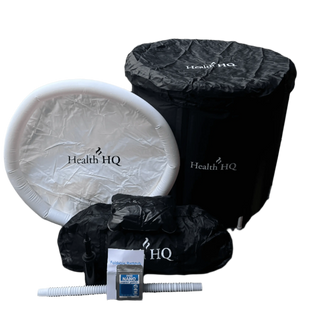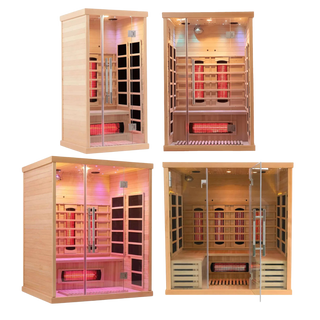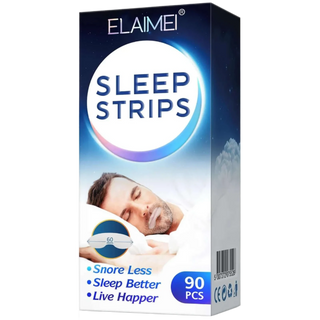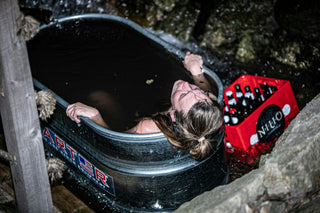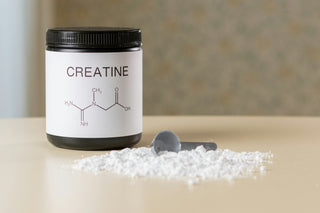Illuminating Sleep: How Light Affects Sleep Quality and Recovery
Light isn’t just for seeing—it plays a crucial role in regulating our body’s internal clock, influencing sleep quality, and supporting overall recovery. In today’s 24/7 society, where artificial lighting and screens often disrupt our natural rhythms, understanding how light impacts our sleep is more important than ever. In this post, we’ll explore the science behind light and sleep, examine how different types and colors of light can either help or hinder recovery, and provide actionable tips to create an environment that promotes restorative sleep.
The Science of Light and Circadian Rhythms
At the heart of the connection between light and sleep is the circadian rhythm—a roughly 24-hour internal clock that regulates many physiological processes including sleep, hormone production, and metabolism. This rhythm is primarily driven by light exposure:
- Morning Light: Exposure to natural light in the morning signals your brain to suppress melatonin (the hormone that promotes sleep) and helps reset your circadian clock, promoting alertness and energy throughout the day.
- Evening Light: As daylight fades, your body ramps up melatonin production to prepare for sleep. However, artificial light—especially blue light from screens—can delay this process, making it harder to fall asleep and reducing sleep quality.
Understanding how light influences our biological clock is key to harnessing its benefits for sleep and recovery.
How Light Impacts Sleep Quality
Melatonin Production
Melatonin is often referred to as the “sleep hormone” because it signals to your body that it’s time to wind down. Natural light exposure during the day keeps melatonin levels low, while dim, warm light in the evening allows them to rise and facilitate sleep. Disruption of this natural cycle—such as from prolonged exposure to blue light—can lead to decreased melatonin production and delayed sleep onset.
Sleep Architecture and Recovery
Sleep isn’t just about how quickly you fall asleep, but also about the structure of your sleep cycles. Deep sleep and REM sleep are essential for physical recovery, memory consolidation, and emotional regulation. Poor lighting conditions in the evening can interfere with these critical sleep stages, reducing overall sleep quality and impairing recovery processes.
Mood and Cognitive Function
Light exposure doesn’t only affect sleep—it also has a significant impact on mood and cognitive performance. Insufficient natural light or exposure to poor-quality light can lead to sluggishness, diminished concentration, and even mood disorders such as seasonal affective disorder (SAD). A well-regulated sleep-wake cycle supported by proper light exposure contributes to improved mental clarity and emotional balance.
How Different Colors of Light Impact Sleep and Recovery
Not all light is created equal. The color or wavelength of light plays a critical role in how it influences our body:
- Blue Light: Predominantly emitted by smartphones, tablets, and LED lighting, blue light is highly effective at suppressing melatonin production. Exposure to blue light in the evening can trick your brain into thinking it’s still daytime, leading to delayed sleep onset and reduced sleep quality. This is why many experts recommend using blue light filters or “night mode” on digital devices before bed.
- White Light: While white light contains all wavelengths, its impact depends on its intensity and the time of day. Bright white light in the morning can help boost alertness and reset your circadian rhythm, but too much exposure in the evening can have a similar effect to blue light, interfering with sleep.
- Red and Amber Light: These warmer hues have a lower color temperature and are less likely to suppress melatonin production. Studies suggest that using red or amber lighting in the evening can promote relaxation and support the natural sleep cycle. Some sleep experts recommend replacing harsh, cool-toned lighting in your home with softer, warmer alternatives as bedtime approaches.
- Green Light: While green light is less studied in the context of sleep compared to blue and red, some research indicates it may have a minimal effect on melatonin production. However, it’s best to use green light with caution and ensure that overall lighting is dim and soothing during the night.
Understanding these differences can help you create a more sleep-friendly environment by choosing the right types of light for different times of the day.
Creating a Light-Friendly Sleep Environment
Embrace Natural Light During the Day
- Morning Sunlight: Begin your day by spending time outdoors or near a window. Natural light in the morning resets your circadian clock and boosts alertness.
- Digital Detox: Take regular breaks from screens to benefit from natural light and avoid the excessive blue light that can disrupt your sleep cycle.
Optimize Your Evening Lighting
- Dim the Lights: As evening approaches, gradually dim your indoor lights. Replace bright, cool white bulbs with warm, dimmer alternatives.
- Limit Blue Light Exposure: Avoid using digital devices for at least an hour before bed, or use blue light filters to minimize the impact on melatonin production.
- Use Warm Hues: Consider incorporating red or amber lights in your evening routine to foster a calm, relaxing environment that promotes sleep.
Invest in Sleep-Enhancing Technologies
- Smart Lighting Systems: Use smart bulbs that adjust automatically with the time of day to mimic natural light patterns and support your circadian rhythm.
- Light Therapy Boxes: For those struggling with low mood or SAD, light therapy devices can be an effective way to boost morning alertness and regulate your sleep-wake cycle.
The Role of Light in Recovery
Quality sleep is the cornerstone of physical and mental recovery. Here’s how appropriate light exposure supports this process:
- Muscle Repair and Growth: Deep, uninterrupted sleep is critical for muscle recovery and repair. By optimizing light exposure, you can help ensure that your body spends sufficient time in restorative sleep stages.
- Cognitive and Emotional Rejuvenation: Adequate sleep supports memory consolidation, mood regulation, and overall cognitive function. Good lighting throughout the day and a dim environment in the evening contribute to a balanced sleep cycle.
- Immune System Support: Restorative sleep is essential for a robust immune system. Keeping your circadian rhythm in sync with natural light patterns helps your body fight off infections and recover more efficiently from illness.
Final Thoughts
Light plays an indispensable role in regulating our sleep and recovery. By understanding the impact of both natural and artificial light—and even the colors of light—you can take practical steps to enhance your sleep environment. Embracing morning sunlight, using warmer lights in the evening, and leveraging technology to mimic natural rhythms are all powerful strategies to improve sleep quality and promote recovery.
At HealthHQ, we believe that small changes in your daily routine can lead to significant improvements in your overall well-being. If you’re looking to boost your sleep quality and recovery, start by rethinking how you use light throughout your day and night—and experience the difference that a well-lit, well-regulated routine can make.


